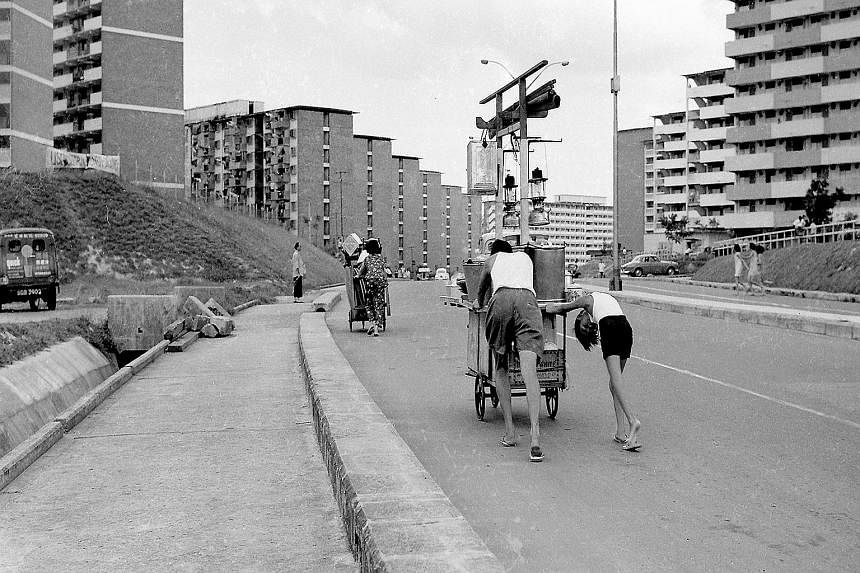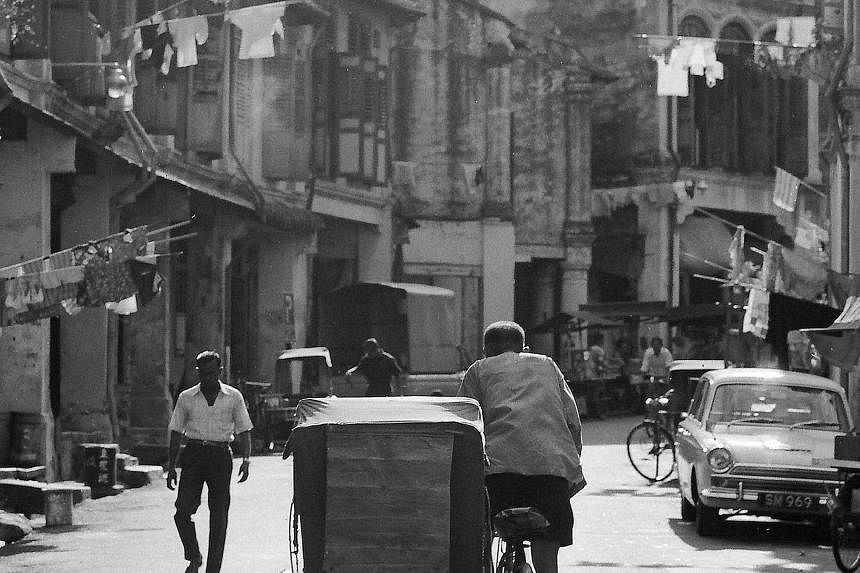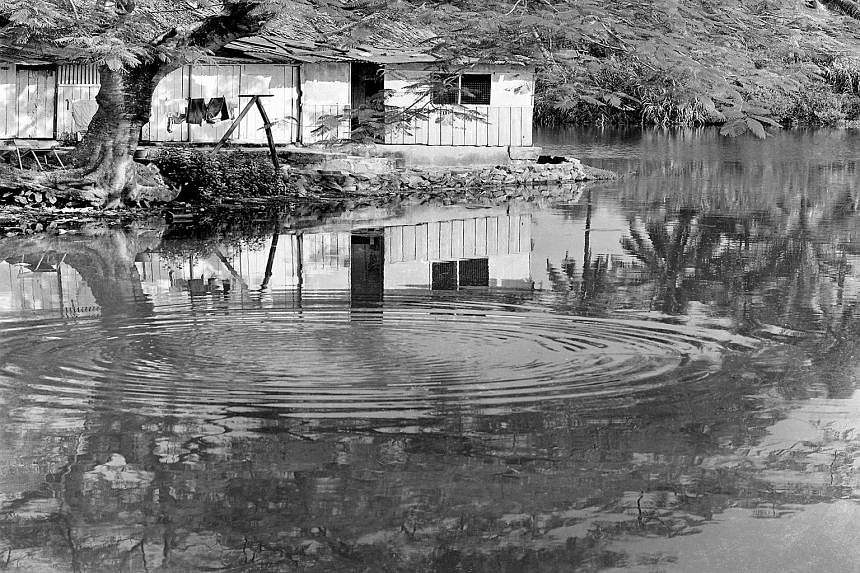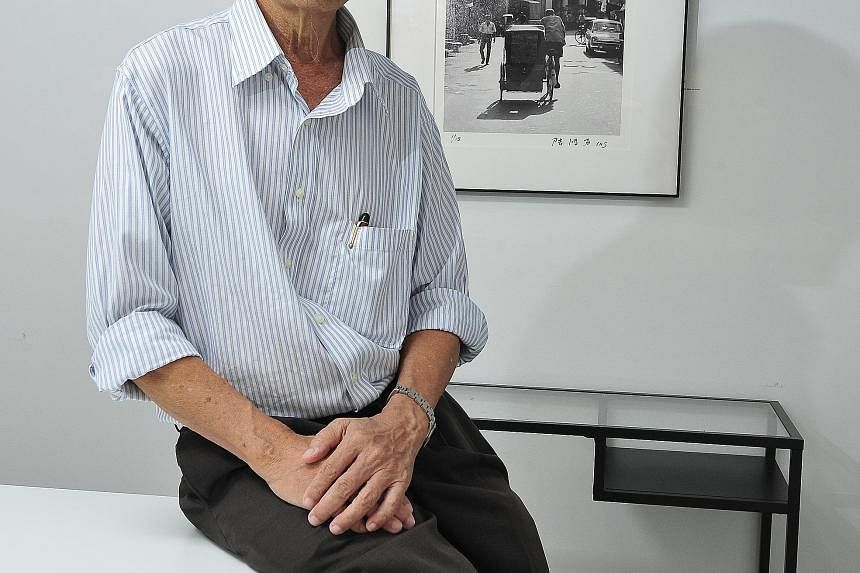One of Loke Hong Seng's favorite shots in his upcoming solo exhibition A Social Portrait Of Singapore: The Critical Years, taken with his Rolleicord camera, shows itinerant street hawkers hunched over, wheeling carts piled high with wares along Circuit Road at Aljunied.
"Every shot has a story behind it. For example, some of these hawkers purposely let themselves be fined so they would have their names taken down by the officers. $10, $20, they all paid up. Then when the authorities built the hawker centres, they were the first ones to move in," recounts the 72-year-old professional photographer in Mandarin.
He was speaking to Life! at Yeo Workshop at Gillman Barracks. Next month, he will exhibit a series of 20 black-and- white digital prints of photographs shot on film charting the nation's formative years between 1963 and 1985.
"It wasn't as common as it is now to own a camera. The average person made about $120 and a camera cost $300. I was lucky enough to have one, so I would like to share what I took then," says Loke, who began his career as a broadcaster at Radio Singapore in his 20s, producing dramas in Mandarin and Cantonese.
-
View It
-
A SOCIAL PORTRAIT OF SINGAPORE: THE CRITICAL YEARS BY LOKE HONG SENG
Where: Yeo Workshop, Gillman Barracks, 1 Lock Road
When: July 3 to Sept 6
Admission: Free
Info: Go to www.yeoworkshop.com
"This exhibition looks at the transformation of Singapore's society, how HDB built up our country and the changes that non HDB-dwellers faced as they moved out. I'm showing my street shots as that's where I learnt photography," he says.
He captured a few of these shots while driving past the demolition of a kampung along Jalan Eunos. He remembers stopping his car, getting out and clicking away to capture residents standing amid strewn debris, while a newly built monolithic HDB flat loomed in the background.
"The biggest difference in photography then and now, is that with digital cameras, you can shoot and re-shoot so easily. With film cameras, the film is so precious you have to get the shot right in the moment… the composition, the lighting and the style. Even developing the photos in the darkroom requires proper technique," he says.
Another focus in his series is the immigrant Samsui women from China's Guangdong province, hired as cheap manual labour to fuel Singapore's early construction boom. "When I shoot, I look for subjects with a history. And I wanted to pay tribute to these women, who spent their lives toiling at construction sites. My own grandmother was a Samsui woman too - I remember stumbling upon her belongings under the bed," he recalls.
The avid shutterbug, who still wanders around Singapore today, snapping photos on his mobile phone and digital camera, first picked up photography by experimenting with his elder brother's Topcon camera.
In the 1970s, he took a more serious interest in the medium, eventually joining the Photographic Society of Singapore. One image he took of a performer at the 1971 National Day Parade was featured at the Photokina exhibition, a major biennial photography trade fair in Cologne, Germany, in 1974. The society's president, commercial photographer Goh Kim Hui, 63, says: "Loke's knowledge of Singapore's history comes across in his photos. He feels that it's a loss when places and people here fade away, so he has used his camera to artfully document them."
Loke estimates that he has taken more than 200 photographs in total. While not all of them will be on display at his exhibition next month, they will be published in a book of the same title, retailing for $80.
Pointing to a 1970 shot taken of construction workers laying the finishing touches to a HDB flat in Toa Payoh, he says: "This is how they did it back then, brick by brick... I hope people come and see how different Singapore was then. We had much less."





